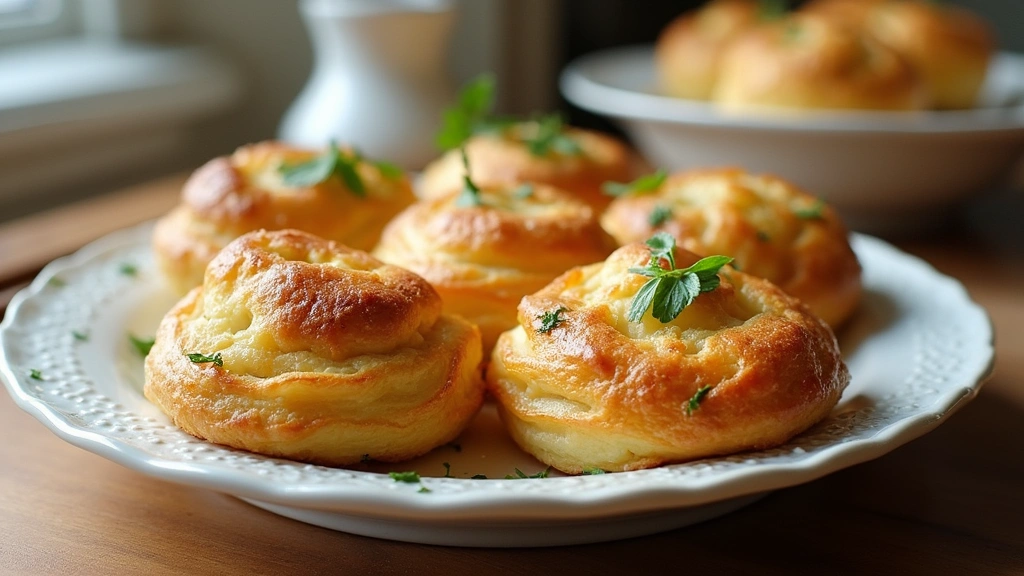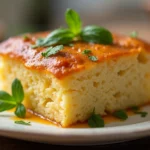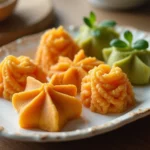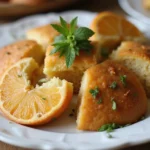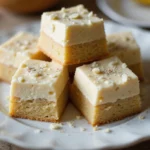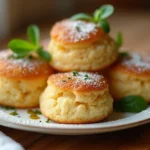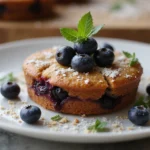Puff pastry is a culinary marvel that brings a touch of elegance to any meal.
Its flaky layers, achieved through a meticulous lamination process, create a delightful texture that is both airy and rich.
Having first encountered puff pastry in a charming bakery in Paris, I was captivated by its versatility and endless possibilities.
From savory appetizers to sweet desserts, puff pastry can elevate simple ingredients into a show-stopping dish.
Join me as we explore some easy baking puff pastry recipes anyone can try, and impress your guests with minimal effort!
The History and Cultural Significance
• Puff pastry traces its origins to ancient times, with roots in the Middle Eastern and Mediterranean cuisines.
• The dish evolved over centuries, particularly in France during the 17th century, when chefs refined the lamination technique to perfection.
• In French culture, puff pastry traditionally appears at celebrations such as Epiphany, where it is crafted into a galette des rois, symbolizing unity and festivity.
• While many variations exist across different cultures, the authentic French puff pastry maintains its signature flaky texture and buttery flavor that sets it apart from imitations.
Recipe Overview
Nutritional Information (per serving)
Ingredients
Essential Equipment Guide
Rolling Pin: A good rolling pin is essential for achieving the perfect thickness in puff pastry. Look for a sturdy, smooth surface to ensure even rolling and avoid sticking.
Baking Sheet: A quality baking sheet with an even surface promotes uniform baking. Consider using a sheet lined with parchment paper to prevent sticking and facilitate easy cleanup.
Pastry Brush: A pastry brush is vital for applying egg wash or glaze to achieve that golden-brown finish. Choose a brush with soft bristles for even application.
Preparation Methods
Lamination: This technique involves folding and rolling the dough with butter to create layers. This is crucial for achieving the desired flakiness in the final product. To master it, ensure your butter is cold and the dough is well-chilled between folds.
Egg Wash: Applying an egg wash before baking gives the pastry a beautiful golden-brown color. Whisk an egg with a tablespoon of water and brush it over the dough before it goes into the oven for the best results.
Blind Baking: This process involves baking the pastry without filling to prevent sogginess. It’s essential for tarts or bases; use pie weights to weigh down the dough and keep it flat.
Step 1: Prepare Ingredients
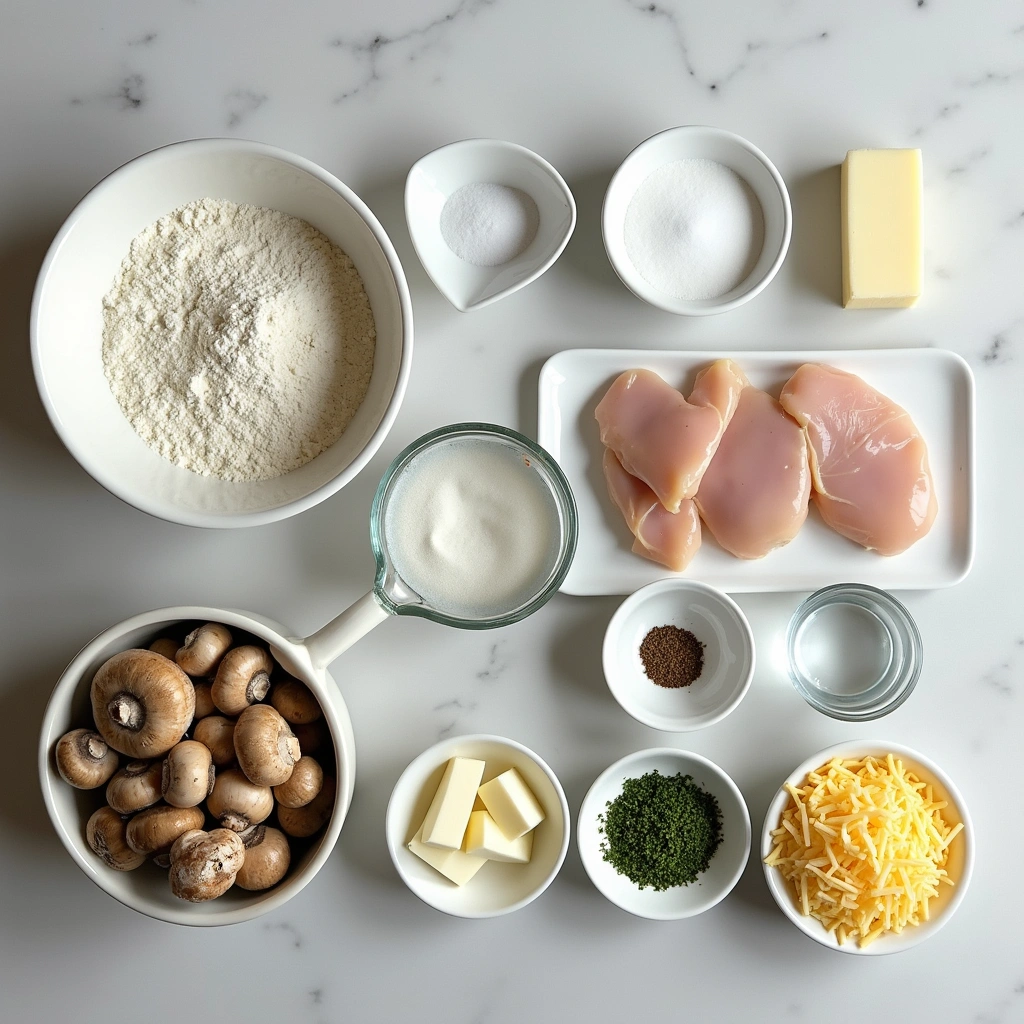
Start by gathering all your ingredients and measuring them accurately.
Ensure that your butter is cold and cubed to maintain the flakiness of the pastry.
Sift the flour with salt to aerate it and remove any lumps.
Having everything ready will streamline your preparation process.
Step 2: Make the Dough
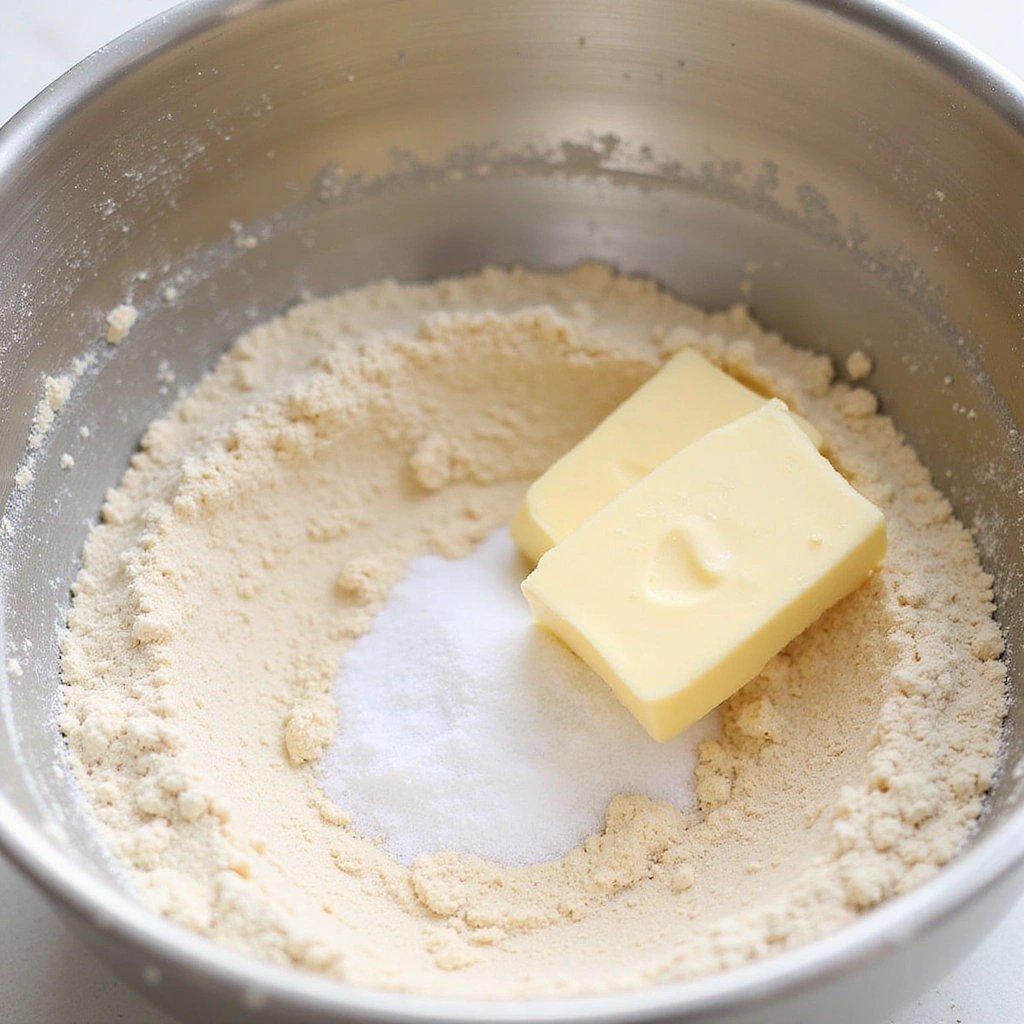
In a large mixing bowl, combine the flour and salt thoroughly.
Add the cold butter cubes and use a pastry cutter or your fingers to blend until the mixture resembles coarse crumbs.
Gradually add cold water, mixing until the dough just comes together.
Avoid overworking the dough to ensure a flaky texture.
Step 3: Laminate the Dough
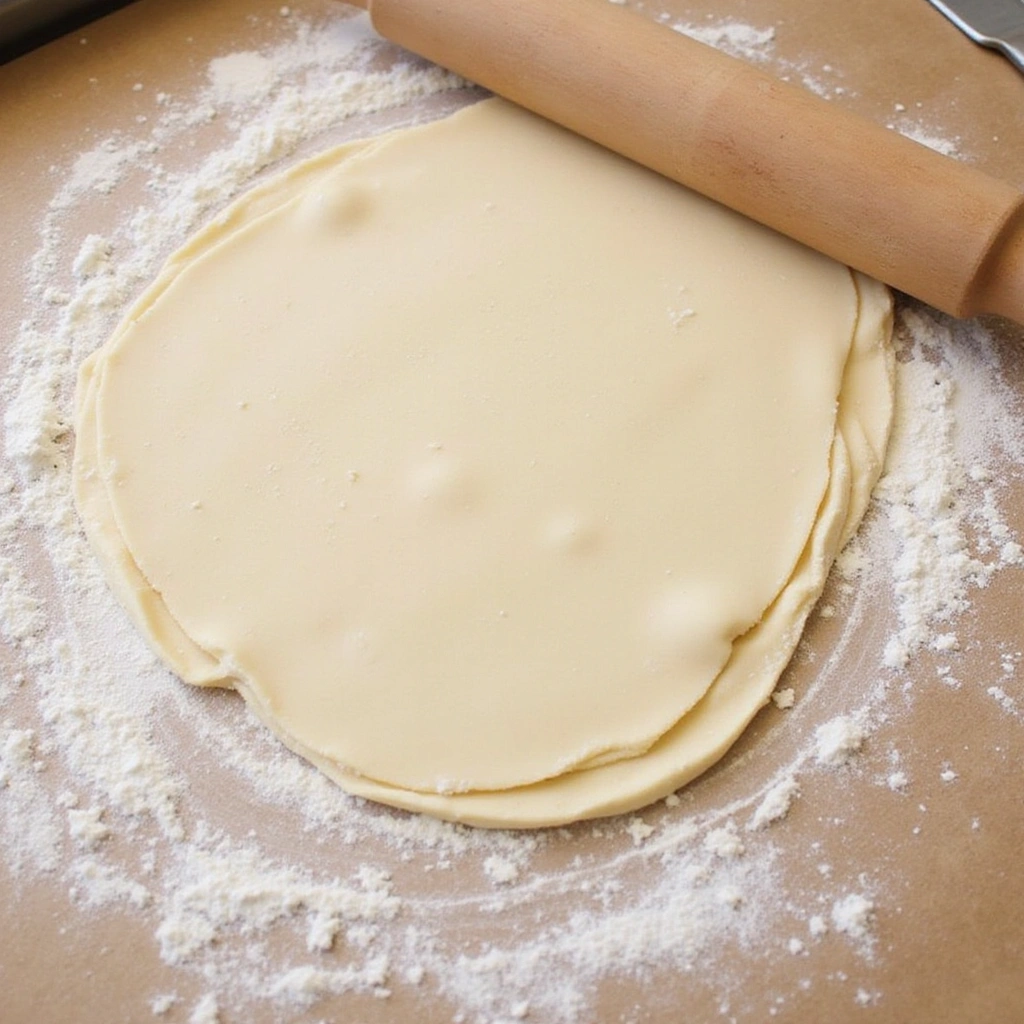
Transfer the dough to a lightly floured surface and roll it out into a rectangle.
Fold the dough into thirds, like a letter, and turn it 90 degrees.
Roll it out again into a rectangle and repeat the folding process two more times.
Chilling the dough between each fold is crucial for maintaining the butter’s firmness.
Step 4: Prepare the Filling
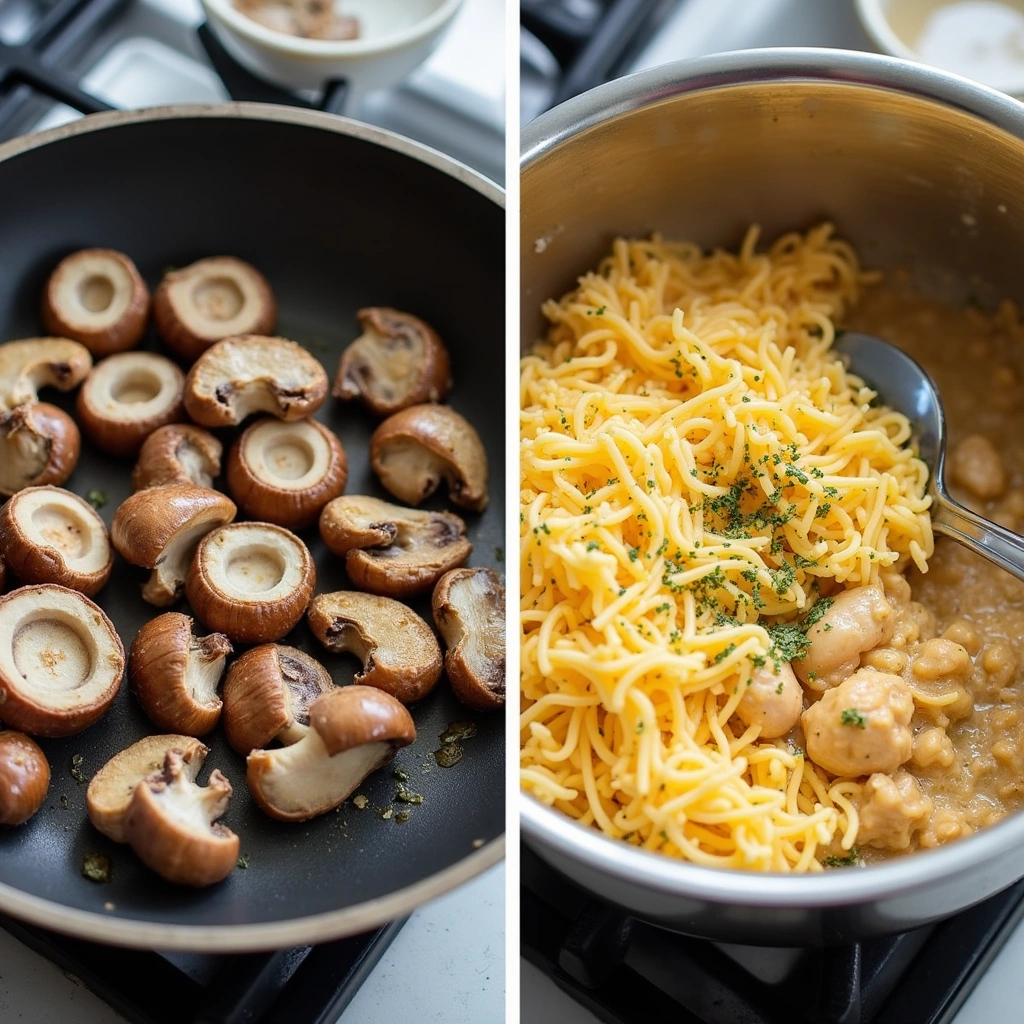
In a skillet, sauté the mushrooms over medium heat until they are tender and lightly browned.
In a bowl, mix the shredded chicken, sautéed mushrooms, cheese, and herbs until combined.
Season the filling with salt and pepper to taste, ensuring a balanced flavor.
Let the filling cool slightly before using it to avoid melting the pastry.
Step 5: Roll Out the Dough for Filling
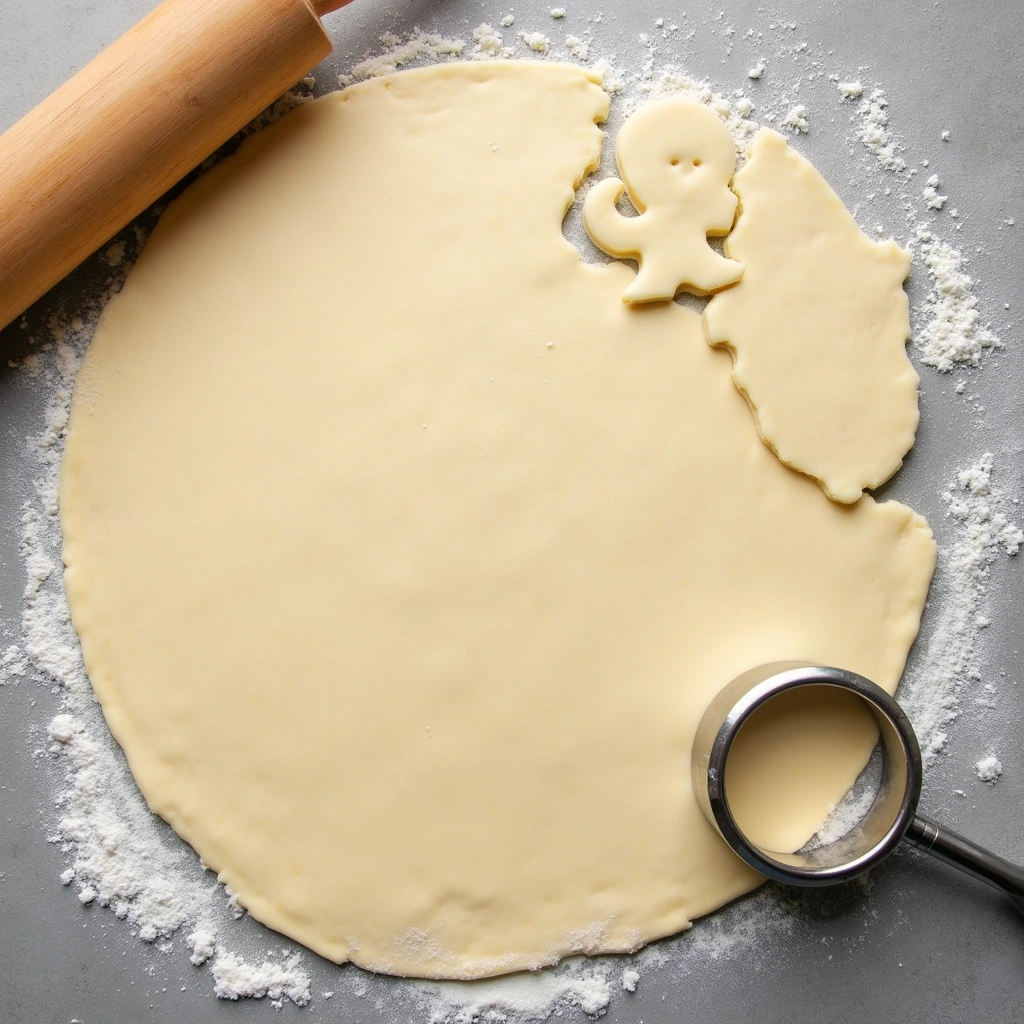
After chilling the laminated dough, roll it out to about 1/8-inch thickness on a floured surface.
Cut the dough into squares or circles, depending on your desired shape for the pastries.
Make sure to keep the edges neat for a professional finish during baking.
Re-chill the cut dough if it feels warm to the touch before filling.
Step 6: Assemble the Pastries
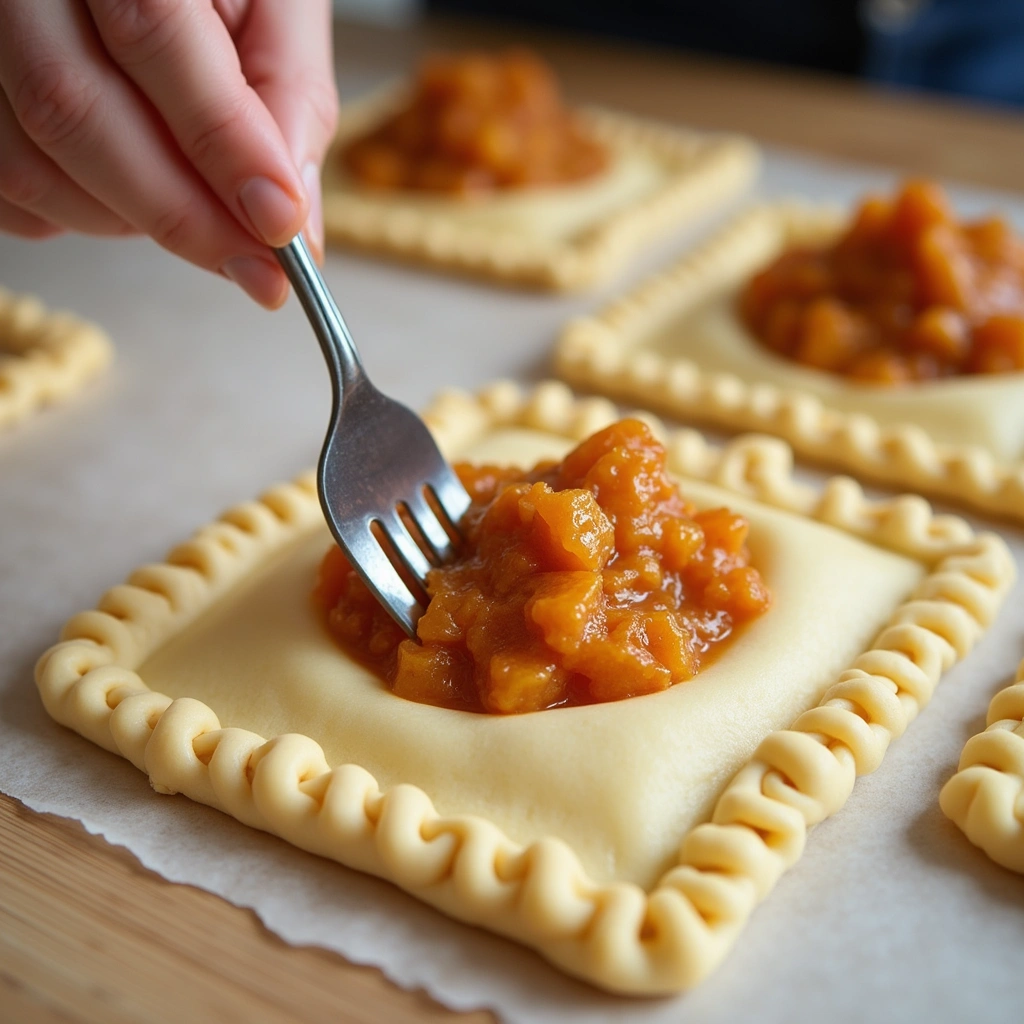
Place a spoonful of filling in the center of each pastry shape, being careful not to overfill.
Fold the dough over to create a pocket, and press the edges together firmly to seal.
Use a fork to crimp the edges for a decorative touch and added security.
Brush the tops with egg wash for a beautiful finish before baking.
Step 7: Bake the Pastries
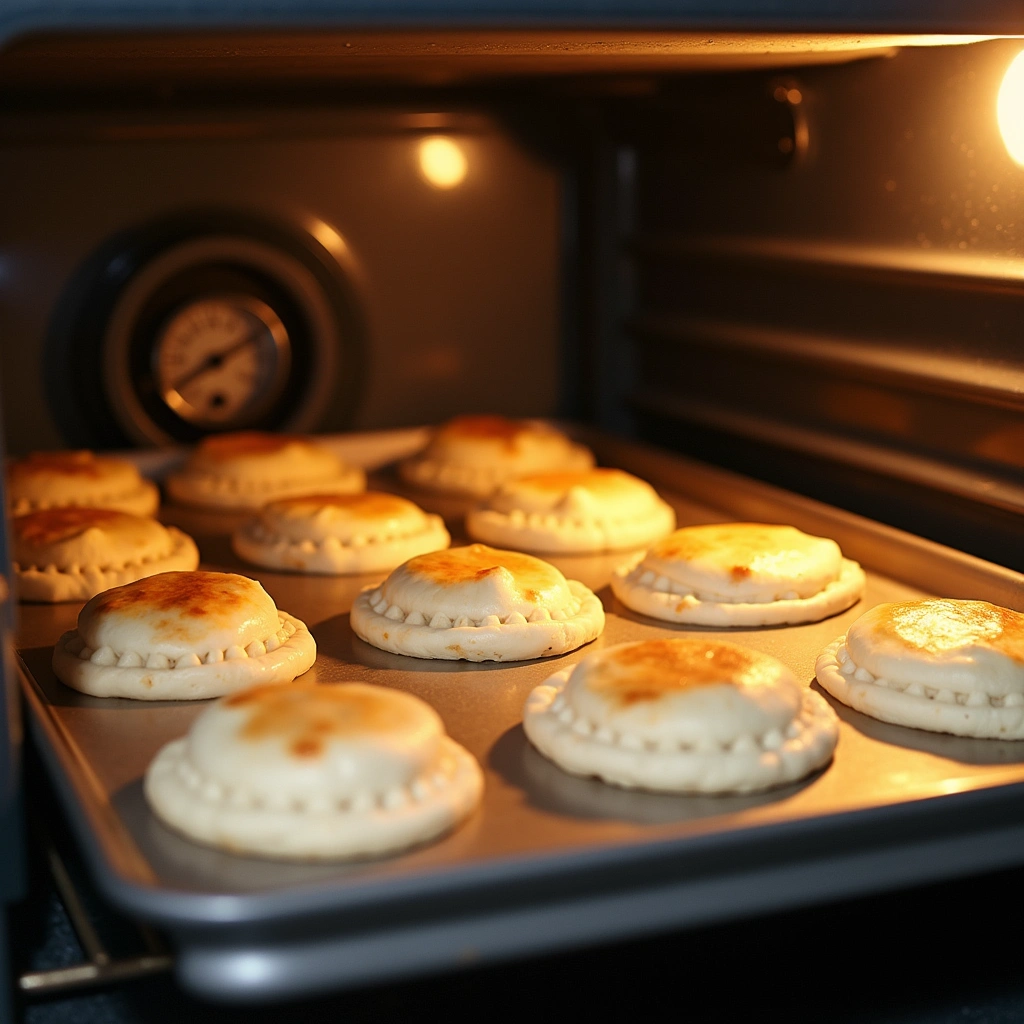
Preheat your oven to 400°F (200°C) and line a baking sheet with parchment paper.
Arrange the assembled pastries on the sheet, leaving space between each one for expansion.
Bake for 20-25 minutes or until golden brown and puffed up.
Keep an eye on them towards the end to prevent burning.
Step 8: Cool and Serve
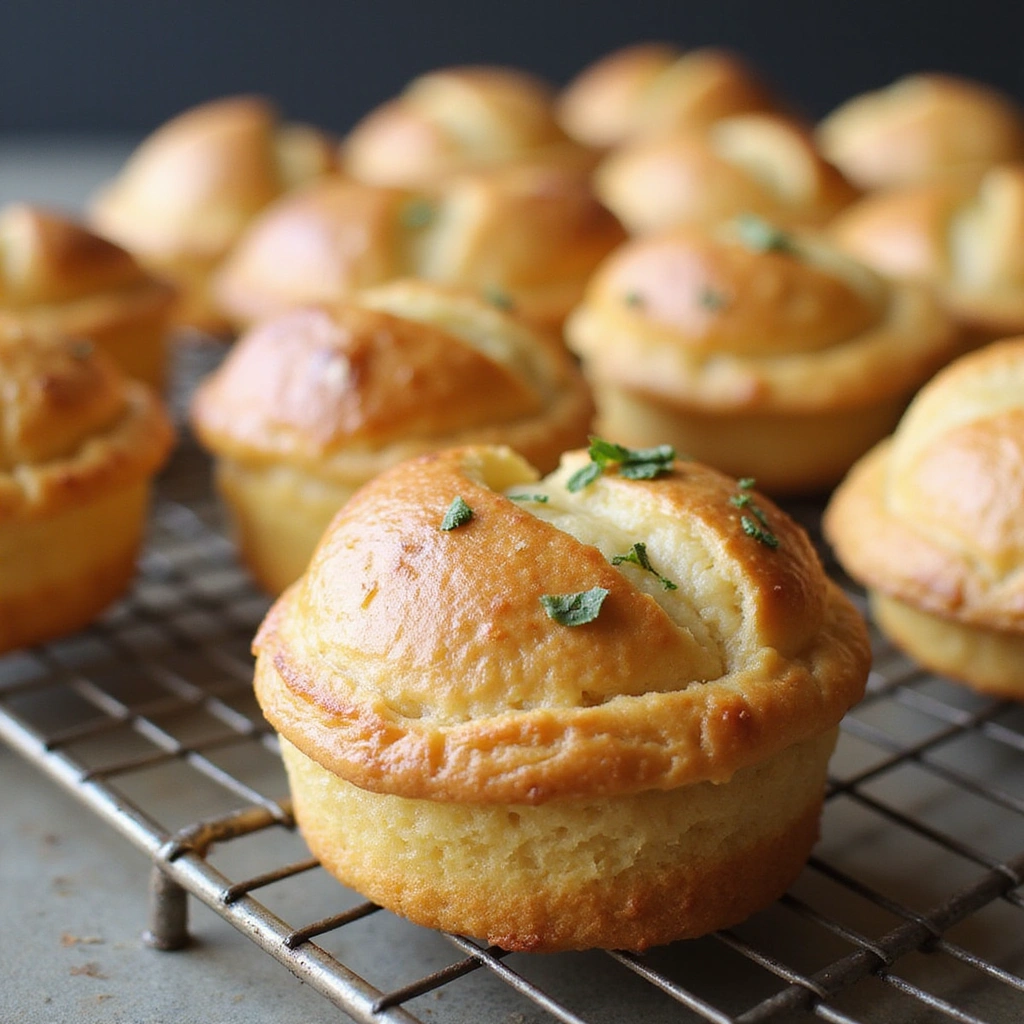
Once the pastries are golden and puffed, remove them from the oven and let them cool slightly on a wire rack.
This allows excess steam to escape and keeps the pastry crisp.
Serve warm as an appetizer or alongside a salad for a delightful meal.
Garnish with fresh herbs for an appealing presentation.
Critical Timing and Temperature Guide
Baking Time: Bake the pastries for 20-25 minutes at 400°F (200°C). Look for a deep golden color and a puffed appearance as indicators of doneness. Avoid opening the oven door frequently, as this can affect the puffing process.
Cooling Time: Let the pastries cool for about 5 minutes on a wire rack after baking. This helps maintain their crispiness. Don’t rush this step; serving them too hot can cause the filling to spill out.
Chilling Time: Chill the laminated dough for at least 30 minutes after each fold. This keeps the butter firm, which is essential for the layers to form properly. Skipping this step can lead to a dense pastry.
Pro Tips for Baking Puff Pastry Recipes Anyone Can Try
• Ingredient Selection: Use high-quality butter for the best flavor and flakiness in the pastry. Look for European-style butter with a higher fat content.
• Preparation Secret: Always keep your ingredients cold. This is crucial for maintaining the integrity of the layers during the lamination process.
• Temperature Management: Ensure your kitchen is cool when working with puff pastry. If it gets too warm, the butter can melt, compromising the final texture.
• Texture Enhancement: For an extra flaky pastry, incorporate a little vinegar into the dough. This strengthens the gluten and enhances flakiness.
• Flavor Layering: Experiment with adding spices or cheese to the filling for complex flavors that will surprise your guests.
• Make-Ahead Strategies: You can prepare the dough and filling a day in advance. Keep them in the fridge separately until you’re ready to assemble and bake.
• Restaurant-Quality Finishing Touches: Brush the baked pastries with melted butter immediately after removing them from the oven for a shiny finish.
• Equipment Optimization: If using a food processor to make the dough, pulse until the butter is pea-sized, but be careful not to overmix.
Troubleshooting Common Issues
• Texture Too Dense: This often occurs from overworking the dough. If you notice a dense texture, ensure you’re folding and rolling just enough to create layers without overmixing.
• Filling Leaking: If your filling spills out during baking, it might be due to overfilling or not sealing the edges properly. Always leave a small border and ensure the edges are tightly crimped.
• Puffing Inconsistently: If some pastries don’t puff, check your oven temperature with a thermometer. An inconsistent temperature can lead to uneven baking.
• Burnt Bottoms: If the bottoms burn while the tops remain pale, try using a baking stone or adjusting your oven rack to the middle position for more even heat.
• Too Much Butter Leakage: If excess butter leaks during baking, it could be due to the butter being too soft. Ensure your butter is cold when incorporating it into the dough.
Variations and Regional Differences
• Spanish Empanadas: These are a variation where the puff pastry is filled with spiced meats and vegetables, often served as tapas. The dough is often folded over into a half-moon shape.
• Italian Sfogliatelle: This pastry features a shell of thin layers filled with sweet ricotta and citrus zest. The dough is rolled very thin, enhancing its texture and flavor.
• Middle Eastern Börek: A version that uses layers of phyllo dough instead of puff pastry, typically filled with cheese, spinach, or minced meat, and often brushed with olive oil.
• Modern Interpretations: Today, puff pastry can be adapted with various fillings, including vegan options using plant-based fats and ingredients to cater to dietary restrictions.
Food Science Behind the Recipe
• Lamination: This process creates layers of dough and butter that expand when baked due to steam, leading to a flaky texture. The key is keeping the butter cold and solid during the folding process.
• Gluten Development: When flour is mixed with water, gluten strands form, giving the dough structure. However, the goal with puff pastry is to minimize gluten formation to keep the final product light and airy.
• Steam Leavening: As the pastry bakes, the water in the dough turns to steam, causing the layers to separate and puff up. Proper oven temperature is critical to ensure this steam can build up quickly.
Frequently Asked Questions
What’s the most common mistake people make when preparing puff pastry? Overworking the dough can lead to a tough texture. Always handle it gently and keep it cold.
Can I prepare components of this dish in advance? Yes, the dough and filling can be made a day ahead and stored separately in the fridge.
How do I adapt this recipe for dietary restrictions? Substitute the butter with a plant-based alternative for a vegan version, and use dairy-free cheese for the filling.
What’s the best way to store and reheat leftovers? Store in an airtight container in the fridge for up to 3 days. Reheat in a 350°F (175°C) oven to maintain crispiness.
Can I freeze this dish? Yes, you can freeze the unbaked pastries for up to 2 months. Thaw in the fridge before baking.
What wine or beverages pair best with this dish? A crisp white wine, such as Chardonnay, complements the buttery flavor of puff pastry well.
How can I scale this recipe up for a crowd? Simply multiply the ingredients by the number of servings desired, and consider baking in batches for even cooking.
What side dishes complement this recipe best? A light salad with a citrus vinaigrette pairs beautifully with the richness of the pastries.
How do professional chefs elevate this dish for restaurant service? Chefs often add unique fillings and garnishes, like microgreens or flavored oils, to enhance presentation and flavor.
Serving and Presentation Guide
• Traditional Presentation: Serve puff pastries on a rustic wooden board, garnished with fresh herbs. This showcases the homemade aspect and adds a rustic charm.
• Modern Plating Ideas: Arrange pastries on a simple white plate, drizzling with balsamic reduction for visual appeal. This contrast enhances the dish’s elegance.
• Accompaniment Suggestions: Pair with a light salad or a bowl of soup for a complete meal. A refreshing drink, like iced tea or white wine, complements the flavors well.
• Special Occasion Presentation: For formal events, serve pastries on tiered platters, allowing for an impressive visual display that invites guests to indulge.
Conclusion
I hope these easy baking puff pastry recipes inspire you to try your hand at this delightful technique.
With just a little practice, you can create impressive dishes that will wow your family and friends.
Embrace the joy of baking, and enjoy the delicious results of your labor!
